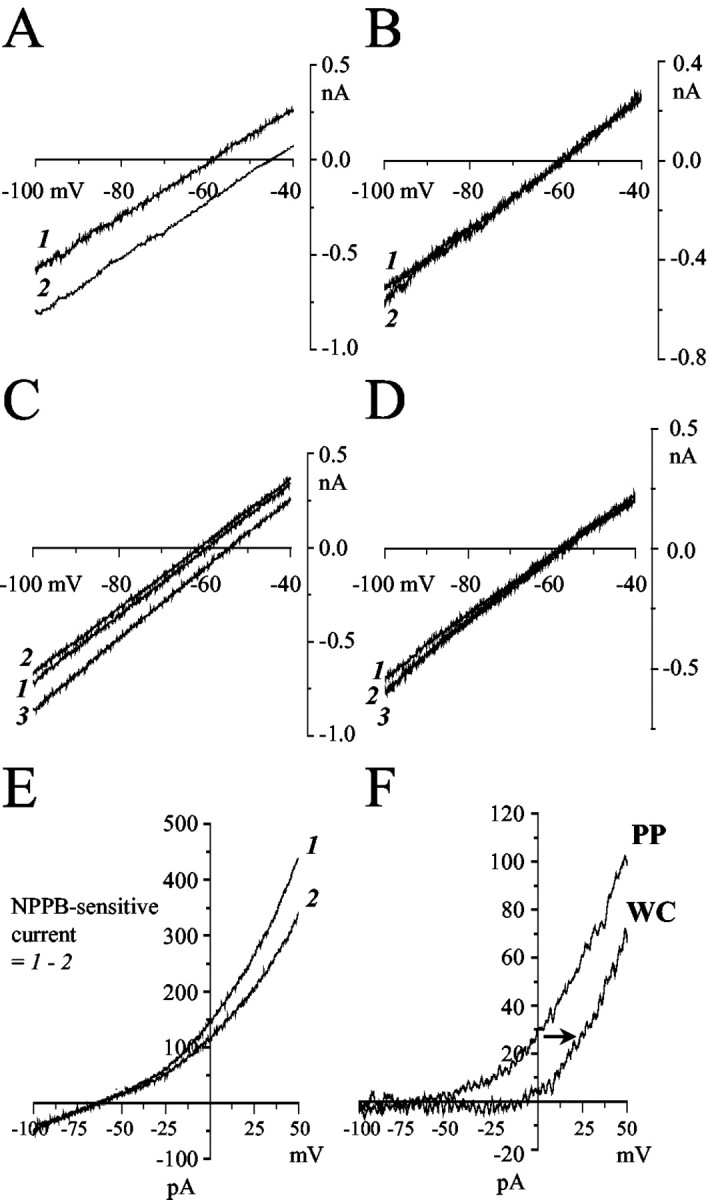Figure 1.

Influx of Cl - during depolarization. A, I—V relation of the GABA-induced current (50 μm) obtained by subtraction of a voltage ramp from -100 to -40 mV before GABA application from a ramp during GABA application before (1) and immediately after (2) 30 sec of kainate application in current clamp. A shift of EGABA toward more positive potentials can be noted, corresponding to an increase in [Cl-]i. B, I—V relation of GABA currents (50 μm) before (1) and immediately after (2) 30 sec of kainate application in current clamp in the presence of 50 μm NPPB, recorded from the same motoneuron as in A. The shift of EGABA during kainate application is prevented. C, I—V relation of GABA currents (50 μm) from a holding potential of -60mV (1), after 30 sec of clamping the membrane at -90mV (2), and after 30 sec of clamping at -20 mV (3). A shift of EGABA toward the clamped potential can be noted. D, I—V relation of GABA current (50 μm) from a holding potential of -60 mV (1), after 30 sec of clamping the membrane at -90 mV (2), and after 30 sec of clamping at -20 mV (3) in the presence of 50 μm NPPB, recorded from the same motoneuron as in C. The shifts in EGABA are prevented. E, A voltage ramp from -100 to +50 mV was given before (1) and after (2) 30 sec application of 50 μm NPPB in a Ca2+- and Na+-free external solution. Note the reduction of the membrane conductance at positive potentials. 1–2 yields the NPPB-inhibited current. F, I—V relation of the NPPB-inhibited current in a Ca2+- and Na+-free external solution obtained in the same neuron with the perforated patch-clamp technique (PP). After rupture of the perforated patch [whole cell (WC)], the NPPB-sensitive current shifts toward the calculated ECl of -2.6 mV, confirming that it is a Cl - current.
